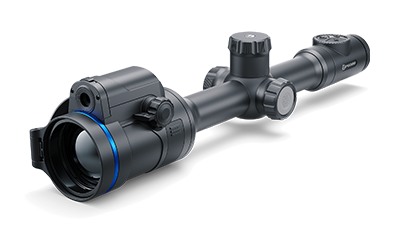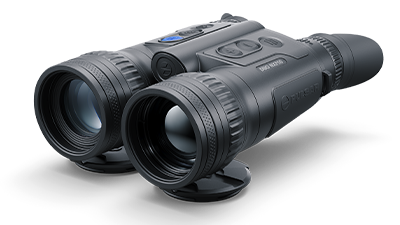Multispectral Devices
Multispectral imaging, when first introduced to hunters, has caused a lot of waves. Incredibly powerful, the multispectral technology allows you to have two (and possibly more in the future) channels with different spectrums in only one device.
It is worth knowing that it is not exactly a multispectral sensor that generates multispectral images in Pulsar devices – in fact, there are two different sensors. One is always thermal, the other – digital, and can be either daytime or nighttime. Together, they create the multispectral fusion so many hunters are raving about.
In multispectral, sensor quality is really important, and that is why we are using some of the best. For thermal, we use the highest sensitivity sensors currently available. For digital, it is either Full HD for nighttime or 4K for daytime.
At Pulsar, we currently have two multispectral imaging devices: the Thermion Duo riflescope and Merger Duo binoculars. Thermion features thermal and digital daytime sensors, while Merger has thermal and digital night vision channels. When combined, they feature all the pros of a multispectral sensor – and perhaps even more.
The greatest benefit of multispectral imaging is that it allows you to get the best of the two technologies: thermal and digital. You can switch between channels with one push of a button, or combine both views for a truly multispectral image.
Multispectral images improve your accuracy by providing even more details so you can spot, recognize, and identify with more confidence. It is an investment, but surely one that will keep on delivering.
Show less
